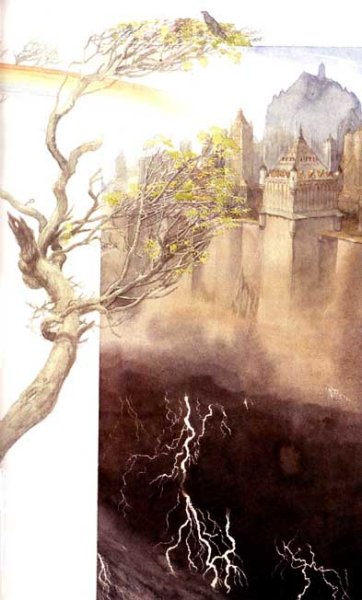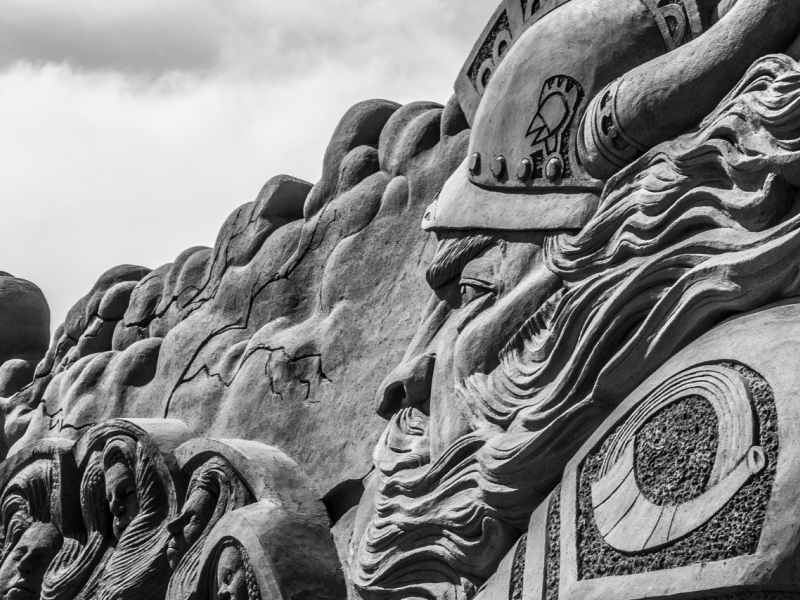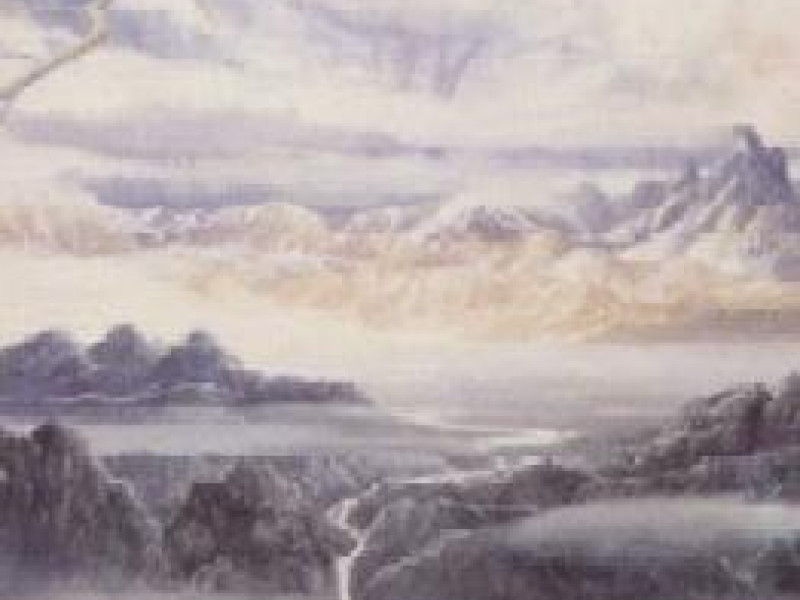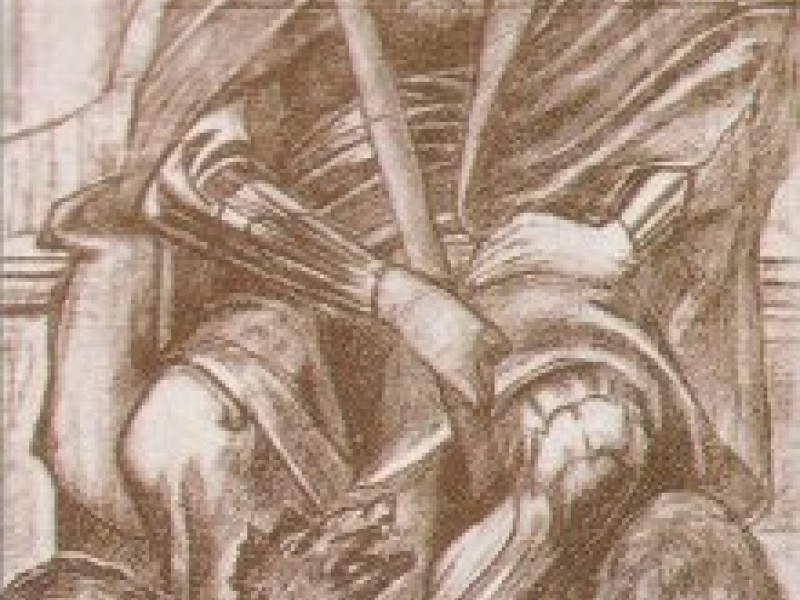Asgard
Home of the Gods
Asgard was the home of the tribe of Norse gods and goddesses known as the Aesir. Twelve palaces or halls were built for each of the more prominent Aesir.
Here, Greek and Roman mythology exerted some influences on the Norse myths. Snorri Sturluson, the Icelandic author who wrote the Prose Edda and the Ynglinga Saga, compared Asgard with Troy from the Greek myths. Snorri said that Asgard was a city in Asaland or Asaheim, in Asia (Asia Minor, or modern Anatolian Turkey).
Snorri also compared the Fall of Troy with that of Ragnarök. Snorri also compared some of the Aesir with either Greek or Trojan heroes - Thor/Hector, Vidar/Aeneas, Vali/Helenus and Loki/Ulysses.
In the Ynglinga Saga, Snorri also portrayed them as human, not gods. They were seen as humans with special powers or magic. The gods were rulers, heroes and heroines, priests and priestesses. Odin was said to be the first king of Norway. The Ynglinga Saga also had a slightly different version of the war between the Aesir and the Vanir.
Asgard was only one of Nine Worlds in the Norse universe. Between Asgard and the Giantland, there was a large, dense forest called Mirkwood or Myrkwood.
The only entrance to Asgard was through the "Rainbow Bridge" called Bifrost (Bilrost). Another name for Bifrost was Ásabrú or As-bridge. The red arc in the rainbow is actually burning fire, to make the bridge impassable for mountain-giants and frost-giants. The responsibility of guarding the entrance was entrusted to Heimdall. Heimdall's home was called Himinbiorg, and it was built near Bifrost.
Thor dwelt in the domain known as Thrudvangar. Thrudvangar had 540 apartments and his main hall was called Bilskirnir. Balder lived in Breidablik, and Forseti had a hall called Glitnir where he acted as judge for the world of gods and men.
Freyja lived in a grand palace called Fólkvangar (Folkvangar). She had several halls within her home, but she mainly lived in her hall Sessrumnir, though she was often seen in Folkvang ("Field of Folk"). Her father was the sea god Njord who preferred to live at his coastal residence, Nóatún, while Freyja's brother Freyr was the Lord of the Elves, so his home was called Alfheim, the world of the elves.
Frigg, Odin's wife, often confused with Freyja; had her own hall called Fensalir. No one could enter her hall and see Frigg without the permission of Fulla, an Asynia and attendant of Frigg.
Odin dwelt in the great hall called Valaskjalf, where he had a great throne called Hlidskjalf. It seemed that the roof of Valaskjalf was made out of silver.
However, the best-known hall was that of Odin, known as Valhalla or Valhall. Valhalla was the hall where the slain warriors resided after falling in battles. While he was seated in the hall of Valhalla, he was known by the name Val-father, meaning the "Father of the Slain". You will find more details about Valhalla given in the new, separate article below, titled Valhalla.
The centre of the city was called Idavoll. Here, the halls Gladsheim and Vingolf were constructed. Gladsheim was the biggest and best building. It was a temple with twelve thrones, and everything seemed to be made of gold. Vingolf was a very beautiful sanctuary for the goddesses.
Below is the description of how the fortified walls were built around Asgard.
Construction of Asgard
The giant named Hrimthurs built the walls around Asgard. Hrimthurs had disguised himself as a man. The giant claimed he could build walls around Asgard within a single winter, if the gods gave him the sun (Sol) and moon (Mani) as payment if he completed the walls in time, as well as Freyja as his wife. Loki, believing that the giant could never finish fortifying Asgard in one winter, persuaded the gods to accept the wager.
The reason why Hrimthurs could build the walls so quickly was that he had a gigantic, magical horse called Svadilfari. This mighty horse helped Hrimthurs move large blocks of rock.
A few days before winter was over, Hrimthurs had almost completed the entire wall. The gods realised that they would likely lose the wager, and threatened to punish Loki for making them accept the wager in the first place. So they forced Loki to ruin Hrimthurs' bet.
Loki disguised himself by transforming into a beautiful mare, so he could distract Svadilfari. Hrimthurs lost control over Svadilfari when the giant stallion began to pursue the mare (Loki). Without Svadilfari, Hrimthurs could not complete the walls in time.
Hrimthurs raged over losing the wager, and threatened to destroy Asgard and the gods. During his rage, Hrimthurs lost his disguise, revealing to the Aesir that he was truly a giant, not a human. Thor killed Hrimthurs with his mighty hammer.
Some months later, Loki brought back to Asgard an eight-legged colt named Sleipnir, the offspring of Svadilfari and Loki (mare). Sleipnir was the magical steed of Odin. Sleipnir sired many famous horses; among them was Grani, the horse of the hero Sigurd.
Related Information
Sources
Voluspa ("Sibyl's Prophecy") from the Poetic Edda.
Grimismal ("Grimnir's Sayings") from the Poetic Edda.
Gylfaginning, from the Prose Edda, written by Snorri Sturluson.
By Jimmy Joe








